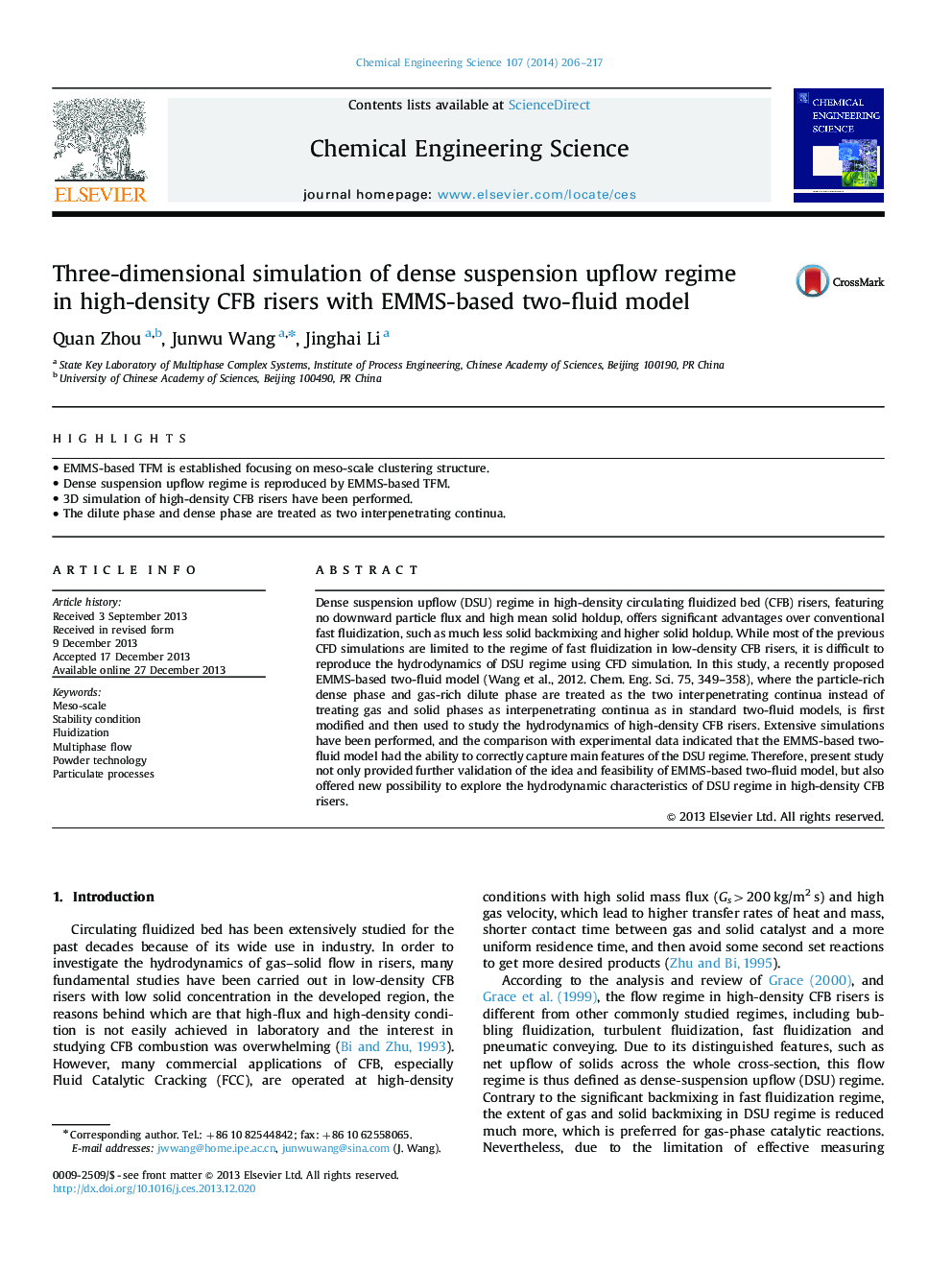| کد مقاله | کد نشریه | سال انتشار | مقاله انگلیسی | نسخه تمام متن |
|---|---|---|---|---|
| 154957 | 456875 | 2014 | 12 صفحه PDF | دانلود رایگان |

• EMMS-based TFM is established focusing on meso-scale clustering structure.
• Dense suspension upflow regime is reproduced by EMMS-based TFM.
• 3D simulation of high-density CFB risers have been performed.
• The dilute phase and dense phase are treated as two interpenetrating continua.
Dense suspension upflow (DSU) regime in high-density circulating fluidized bed (CFB) risers, featuring no downward particle flux and high mean solid holdup, offers significant advantages over conventional fast fluidization, such as much less solid backmixing and higher solid holdup. While most of the previous CFD simulations are limited to the regime of fast fluidization in low-density CFB risers, it is difficult to reproduce the hydrodynamics of DSU regime using CFD simulation. In this study, a recently proposed EMMS-based two-fluid model (Wang et al., 2012. Chem. Eng. Sci. 75, 349–358), where the particle-rich dense phase and gas-rich dilute phase are treated as the two interpenetrating continua instead of treating gas and solid phases as interpenetrating continua as in standard two-fluid models, is first modified and then used to study the hydrodynamics of high-density CFB risers. Extensive simulations have been performed, and the comparison with experimental data indicated that the EMMS-based two-fluid model had the ability to correctly capture main features of the DSU regime. Therefore, present study not only provided further validation of the idea and feasibility of EMMS-based two-fluid model, but also offered new possibility to explore the hydrodynamic characteristics of DSU regime in high-density CFB risers.
Journal: Chemical Engineering Science - Volume 107, 7 April 2014, Pages 206–217